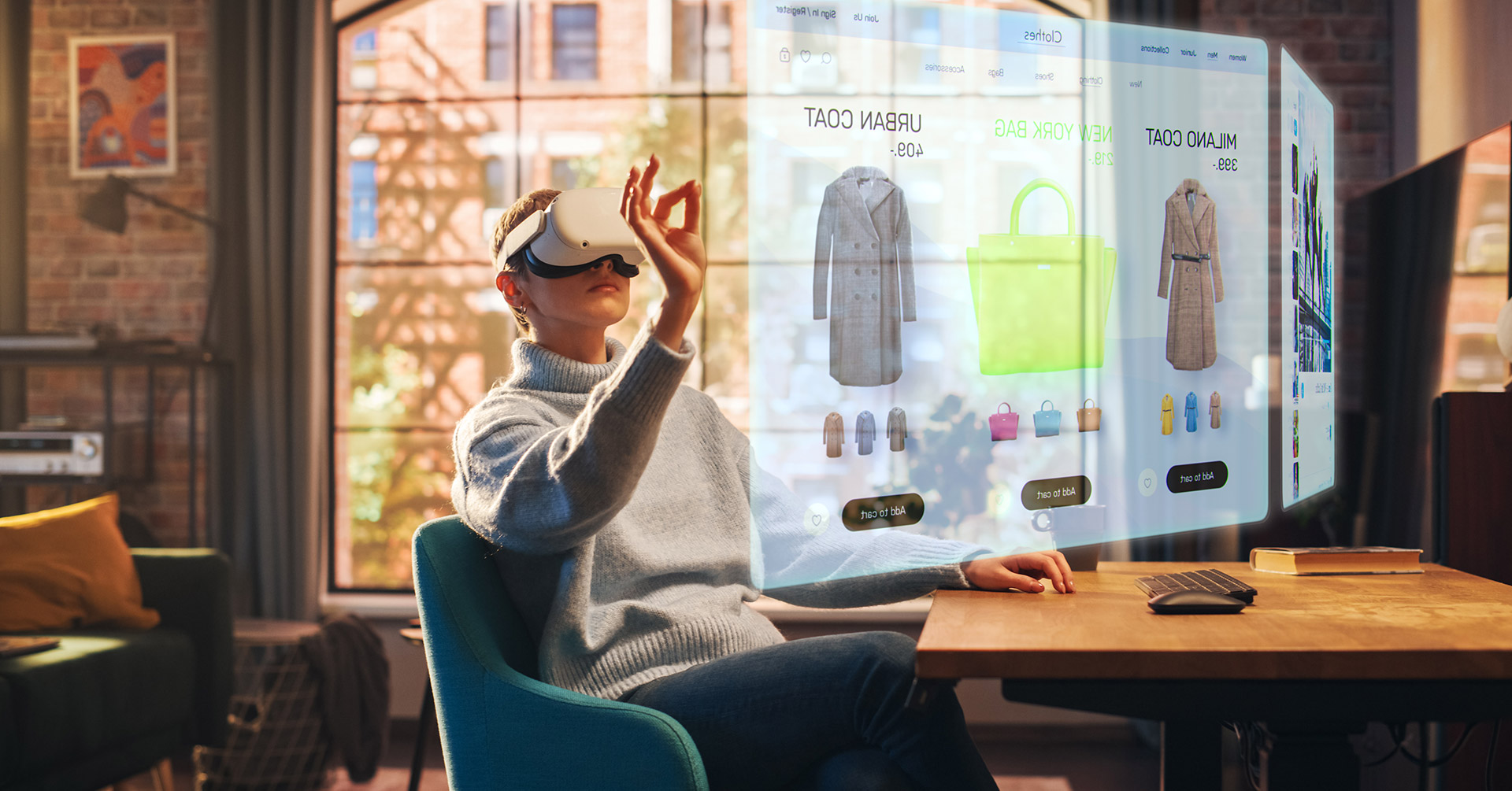Virtual reality (VR) technology has the potential to revolutionise the way we interact with the internet. With VR, users can immerse themselves in a fully-realised digital environment, providing a more engaging and interactive experience.
One of the key advantages of VR in web design is its ability to create a sense of presence. This allows users to feel as though they are actually inside the digital environment, rather than simply viewing it on a screen. This can be particularly useful for showcasing products, such as real estate, or cars, as users can explore the item from all angles and get a better sense of its features. Art galleries, due to the effects of Covid and lockdowns around the world embraced VR as a way to continue showing artist’s collections in a gallery space virtually.
Another advantage of VR in web design is its ability to create a more personalised experience. For example, a VR website for a fashion retailer could allow users to virtually try on clothing and see how it looks on their own body. Additionally, VR can also be used to create interactive tutorials, training simulations, and other educational content.
However, implementing VR into web design also poses some challenges. One of the main challenges is ensuring accessibility for users who do not have access to VR equipment. Additionally, creating VR content can be time-consuming and costly, and it requires specialised skills and knowledge.
VR technology has the potential to greatly enhance the user experience in web design, and with costs for equipment slowly coming down this will become more accessible. There are also several companies including Meta, that are building new online interactive metaverses, containing stores, live event venues and virtual real estate opportunities, bringing the connected virtual world into people’s homes.

